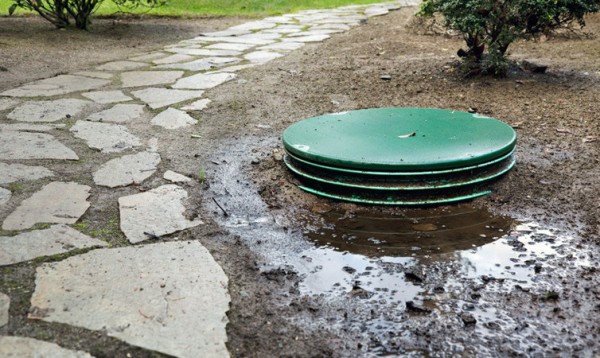Your household septic tank is one of the most cost effective and environmentally friendly options in treating wastewater. Unlike centralized sewers which are found in rural areas, a septic system is basically your homes own wastewater disposal system. If it is not properly maintained you may experience a backup of sewage or a point in the yard that is consistently wet and gives off an odor. If this occurs, your septic tank is failing. Below are the top reasons why this happens and what to do about the problem.
Inadequate Construction or Design
For the septic system to work properly, the soil that the piping system runs through must be level and permeable. The ground must be even for the wastewater to distribute throughout the soil absorption field. If the grade is too steep in areas the water will pool and build up in one place. If the soil is impermeable the wastewater traveling through the pipes cannot be absorbed in the soil. Having no other place to go, it will eventually rise to the surface.
You can obtain a complete soil evaluation from your local health department sanitarian or from a registered soil scientist to determine if the soil is the cause of the septic tank failure. These are by far the most costly and unfavorable reasons for a failing septic tank. If the system was improperly constructed it will most likely cause problems in the first few months. Contact the installation company as soon as possible.
Water Overload
Overloading the septic tank with water can occur for many reasons. When the soil becomes saturated it cannot tolerate any more liquid and may force the wastewater to the surface of the soil or back into the home. Some reasons this can happen are an increase in water usage, such as more people in the household, using appliances that are not water efficient, plumbing leaks or heavy water runoff from roofs, driveways or patios.
Prevent these by paying close attention to your water use, installing water saving appliances and by diverting heavy water runoff. Repair any leaks, paying close attention to leaking toilet valves which can add up to several hundred gallons of water a day distributed through the soil. You may also add more lines to the absorption field which increases the capacity for more wastewater to be taken in.
Maintaining the Septic Tank
A septic tank consists of three layers of wastewater. The solid scum rises to the top as the first layer. The middle layer is water, which gets transferred through the piping system and the last layer is a heavy sludge. Without proper maintenance the scum and sludge could end up in the pipes, clogging them and the absorption field. Cleaning the tank every three years will help maintain the septic tank and prevent obstructing the distribution field. Clean it more often if a garbage disposal is used.
Never flush:
- Tampons, sanitary napkins, condoms, bandages, fats or oils.
- Pesticides, paints, thinners or varnishes
To maintain the absorption field:
- Don’t drive over it with heavy machinery that could damage the soil
- Don’t plant trees or shrubs that will grow roots likely to clog the lines
- Don’t cover with concrete or asphalt that will limit the absorption area
Charlie Teschner started MESA Plumbing, Heating, and Cooling in 1982. Charlie has a journeyman and master plumber’s license. He was raised with a strong work ethic and he now applies those values to tasks such as Longmont, CO heating repair.

